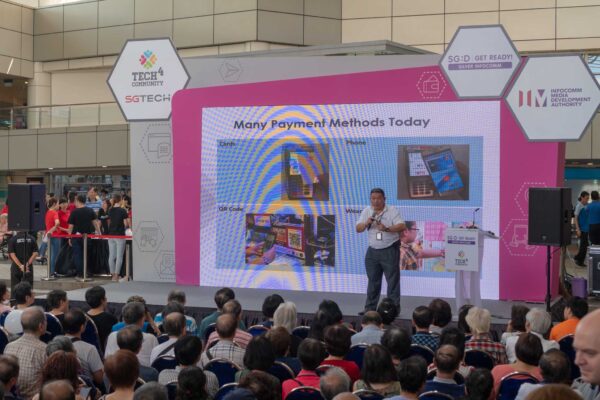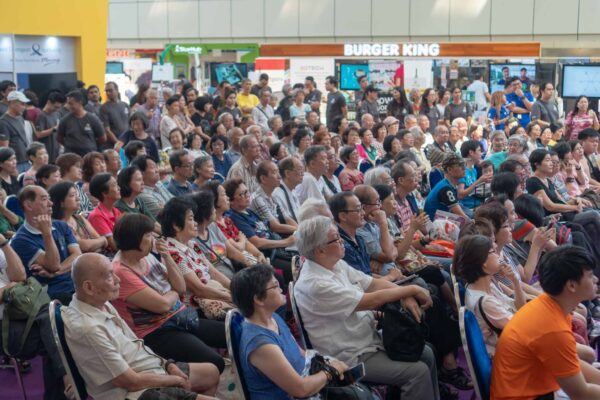
I was recently passing by Toa Payoh Hub and stopped briefly at a SGTech event held at the atrium. There was a talk, largely attended by more senior citizens, aimed at encouraging e-payments. The speaker made some persuasive arguments, but whether the audience would hop on-board is another matter.
As a techie, I am usually very happy to embrace with eager, wide-open arms, any e-payment initiative. I do use contactless cards, mobile payments, and do lots of transactions online. I am often an early adopter with many new initiatives, such as using mobile payment for public commuting. However, I do find myself resistant in at least some areas of e-payments.
The ideas being pushed forward at the SGTech event include using e-payment for casual day-to-day transactions, such as at hawker centres. This is actually one of the areas where I find e-payments can be quite cumbersome. This is especially the case at quick and very high transaction volume stalls, such as drinks stalls.
If it takes a total of 30 seconds to one minute for a food or drink order to be fulfilled, an e-payment transaction that takes up to 10 seconds may not be a significant delay.
However, when I can pick up a can drink to go in just 2 seconds, then fumbling with my mobile phone, scanning a bar code, clicking through incessant confirmations, and waiting for transaction confirmation can become extremely inconvenient. People who have prepared cash can be done in one second, and maybe another second if change is required.
At such quick and very high transaction volume stalls, trying to pay with your mobile phone becomes a major bottleneck, even if everything worked smoothly. If your mobile phone had some lag problems, or your camera had trouble making out the QR code, or there are some network delays with completing the transaction, then you may become subject to angry glares from other customers who are held up by you.
I am disappointed that the Monetary Authority of Singapore didn’t step in much earlier to unify the e-payment standard in Singapore. We already had several competing e-payment systems early on, each living in an island of its own. An app like NETSPay, which you’d expect should work with all local banks, and indeed that’s how its description in the Google Play store reads, but did not actually support banks other than DBS, when I tested last year. Now, we have even more apps getting into the fray, each breaking up your wealth into their money bucket.
While writing this post, I decided to try out NETSPay again. I’m glad it says UOB is supported. However, I was unable to add my UOB card. The app spewed out a very unhelpful “transaction error”.
That is the hurdle to even get started. I am past that hurdle, since I can use, and am using, other payment apps. However, others who have yet to get on-board are surely going to feel overwhelmed.

My focus in this post is on the usage, rather than setup. I feel our e-payment apps are too cumbersome for high-frequency low-value transactions.
Take the canteen drink stall example I shared earlier. During peak periods, I feel I’m inconveniencing people behind me in the queue if I use DBS PayLah or NETSPay to pay. I do see other customers fumbling with their mobile app, oblivious to the bottleneck they are causing, or perhaps just nonchalant about it. This is, after all, what the government is promoting, so maybe there’s nothing to feel guilty about. The stall owner, I suspect, is just playing along because they are compelled to. I see that they struggle to figure out who has paid for what, because sometimes customers behind in the queue try to pay at the same time, before it is their turn, in an effort to help move things along.
In this scenario, cash payment would have been so much more efficient. There may be people who need time to dig out their cash, but the stall owner won’t have any trouble collecting other payments simultaneously from other customers.
Can you, for a moment, imagine if MRT and bus rides are paid for using QR codes at the fare gates/readers? The resulting bottleneck will make public transport completely unworkable.
On public transport, we recognise speed is of the essence, so our EZ-Link cards, NETS FlashPay, credit card and mobile payments are all quick and mostly hassle free. We don’t need this level of speed if you’re buying a $1,000 TV at Courts. But if my only choice of e-payment is to use DBS PayLay when I buy a 80-cent curry puff, I’m certain handing over a $2 note and getting $1.20 back in change will be much quicker.
If we are expecting e-payments to take off in hawker centres, as well as to use in other low-value high-frequency transactions, we need to make the system faster, easier, and more convenient.
agree with your points for fast trans at hawker centres – but do note that QR codes are used in China subway systems (eg Guangzhou subway) which have much more daily throughput than Singapore MRT